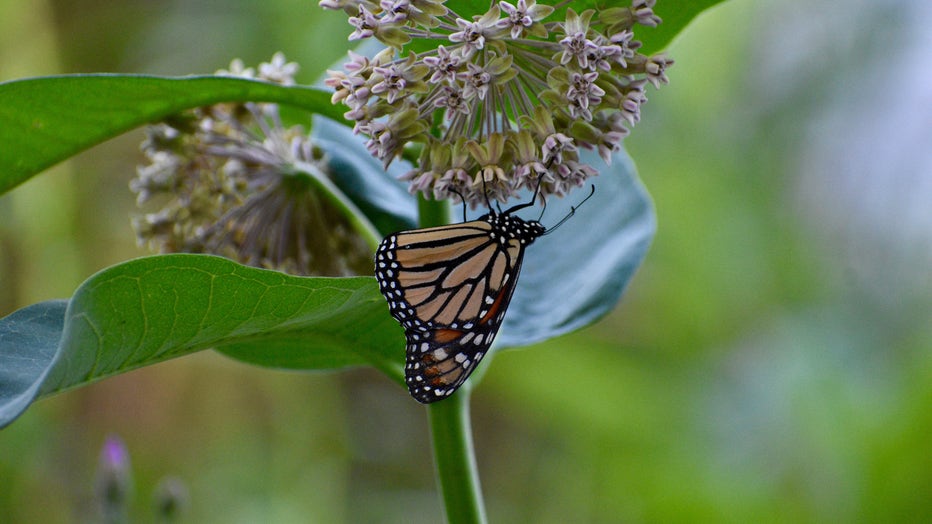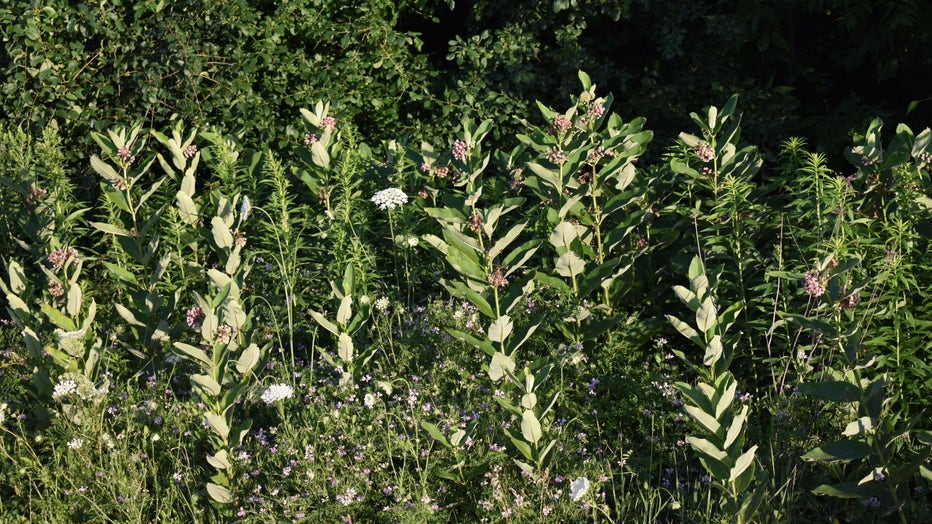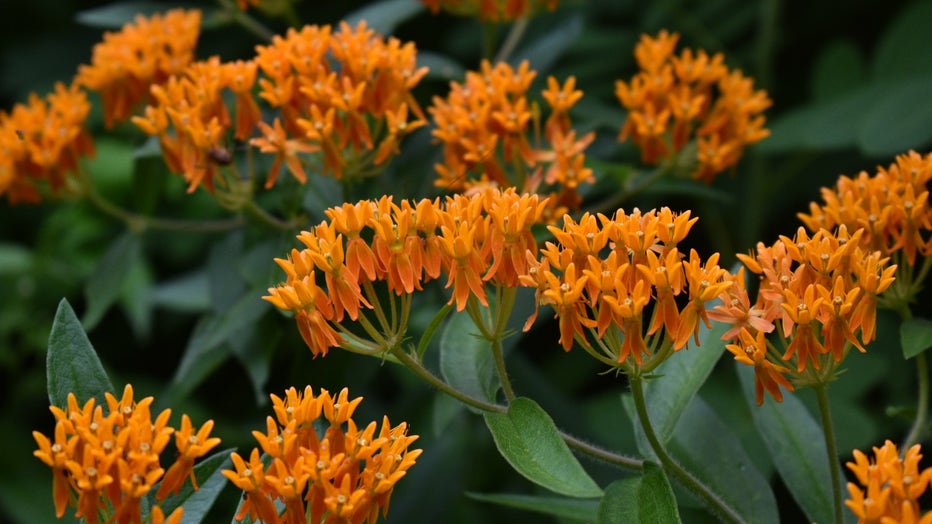Monarchs are back in Wisconsin: How you can help this declining species
MILWAUKEE - Monarch butterfly sightings continue to increase in southeast Wisconsin as they trek farther and farther north for their annual migration.
Wisconsin is a key part of the Midwest region that according to the USDA, along with Illinois, Minnesota, and Iowa produce the most overwintering monarchs in the entire country.

Male Monarch Butterfly resting on a Purple Coneflower
Nationally, Monarch populations continue to steadily decline, according to the World Wildlife Fund-Telmex Telcel Foundation Alliance. In the last year, we've seen a rapid collapse of the western Monarch population while the eastern Monarch population continues to shrink.
Scientists measure monarch numbers by calculating acres of forests they inhabit during their winter dormancy in Mexico.

Female Monarch Butterfly on a Common Milkweed plant
A major way you can help their population is by learning how to identify milkweed and other plants in the Asclepias family and just let them grow.
Monarch butterflies depend on milkweed for their entire life cycle. Leaving milkweed plants alone by not spraying or mowing areas they inhabit creates key habitat for Monarchs and dozens of other species of insects.
To identify, look for straight stalked plants with alternate leaf growth. If you're still not sure, pluck a lower leaf and if milky white sap comes out then it's safe to say it's milkweed.

Young Common Milkweed
Over time, milkweed can form large beds along roadsides and ditches and thrive in edge habitats naturally. If you find large patches on public property another way you can help is to contact city officials and see if these areas can be spared from being mowed until fall.

Over time milkweed can form large clumps of populations and it's best to just leave them alone and avoid spraying or mowing these areas
Common Milkweed is just one member of the Asclepias family and there are other options if you'd like to plant them in your yard or garden. Butterfly weed is another host plant that can add bright orange color to your landscape.
FREE DOWNLOAD: Get breaking news alerts in the FOX6 News app for iOS or Android
Swamp milkweed can also be found at local garden centers that will also support Monarchs. Less common species include Poke Milkweed, Whorled Milkweed, Purple Milkweed, and in all, there are over a dozen native milkweed varieties in the state of Wisconsin.

Butterfly Weed is another member of the Asclepias family that can host Monarch caterpillars and adds bright orange flowers to any garden.
With continued support from the public, it's possible monarch numbers can rebound but due to their migration over 2,000 miles, it requires regional and national effort to help this species rebound.
The first step is as simple as letting them grow and planting some milkweed in your own backyard.
To learn more, follow the Monarch Madness of Wisconsin Facebook page where you can help organize events and participate in other local initiatives including The Monarch Trail organization.

Milwaukee July 3 fireworks canceled
It's the second year in a row the lakefront fireworks display has been canceled, but this time the pandemic is not to blame.

